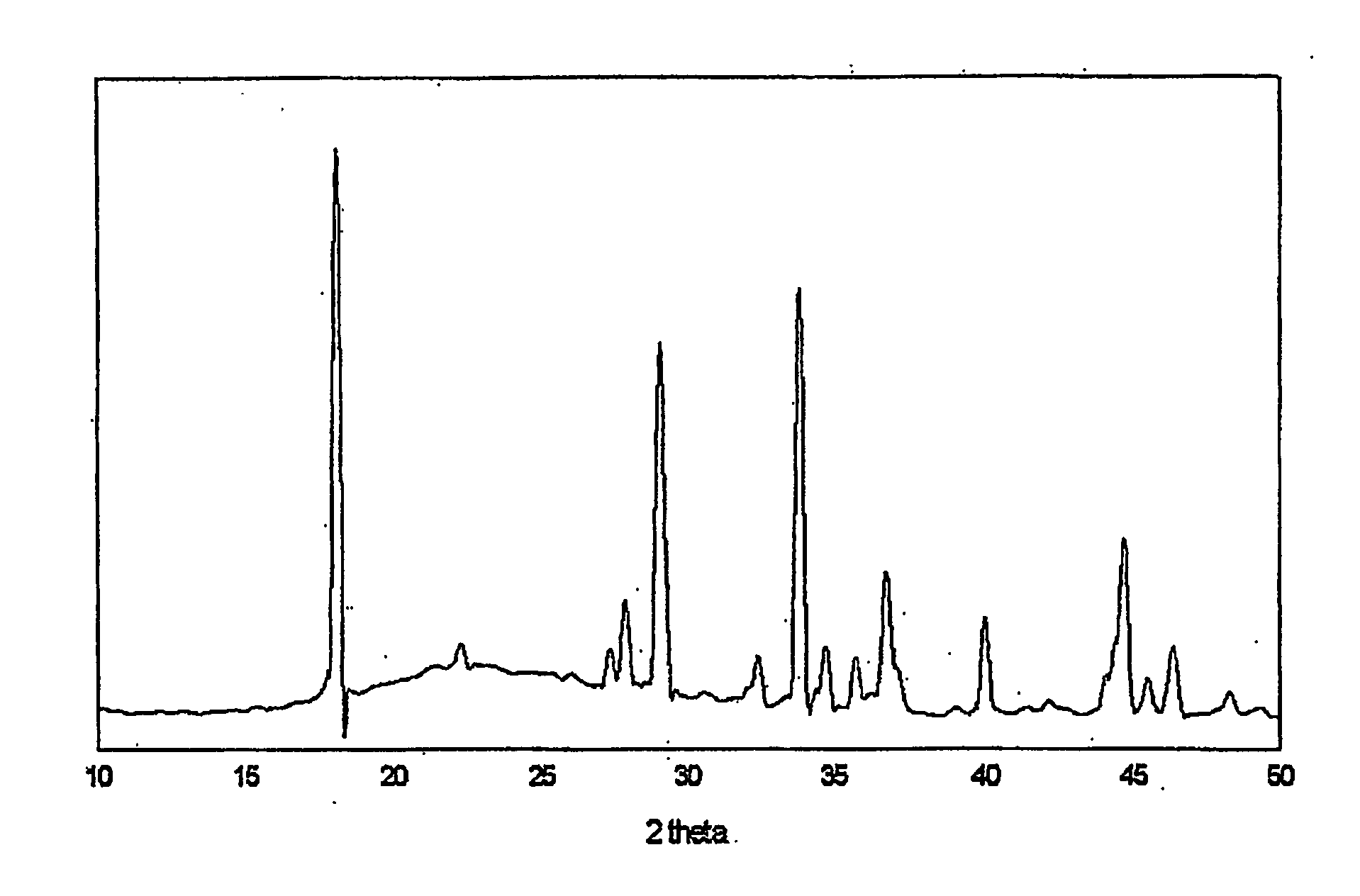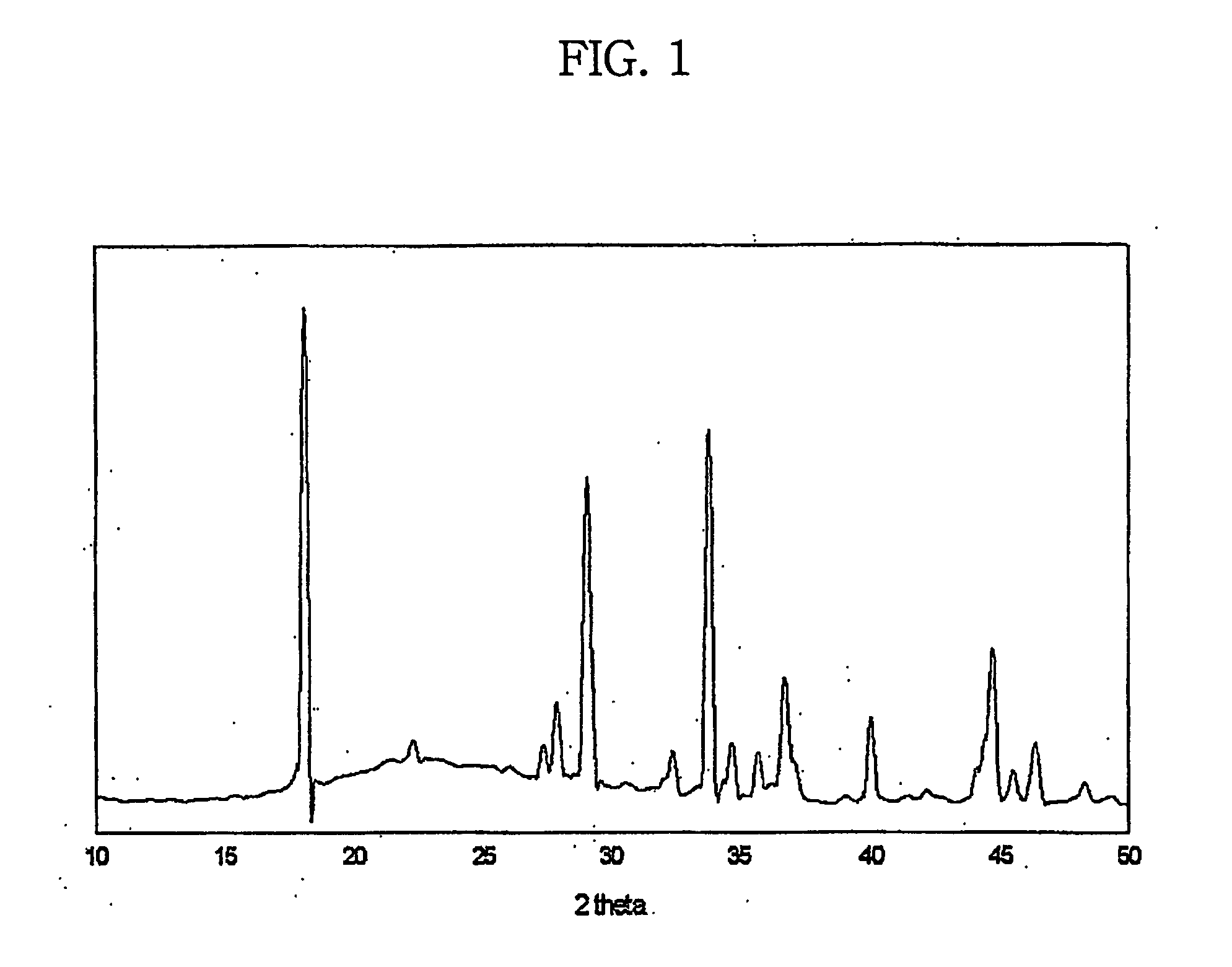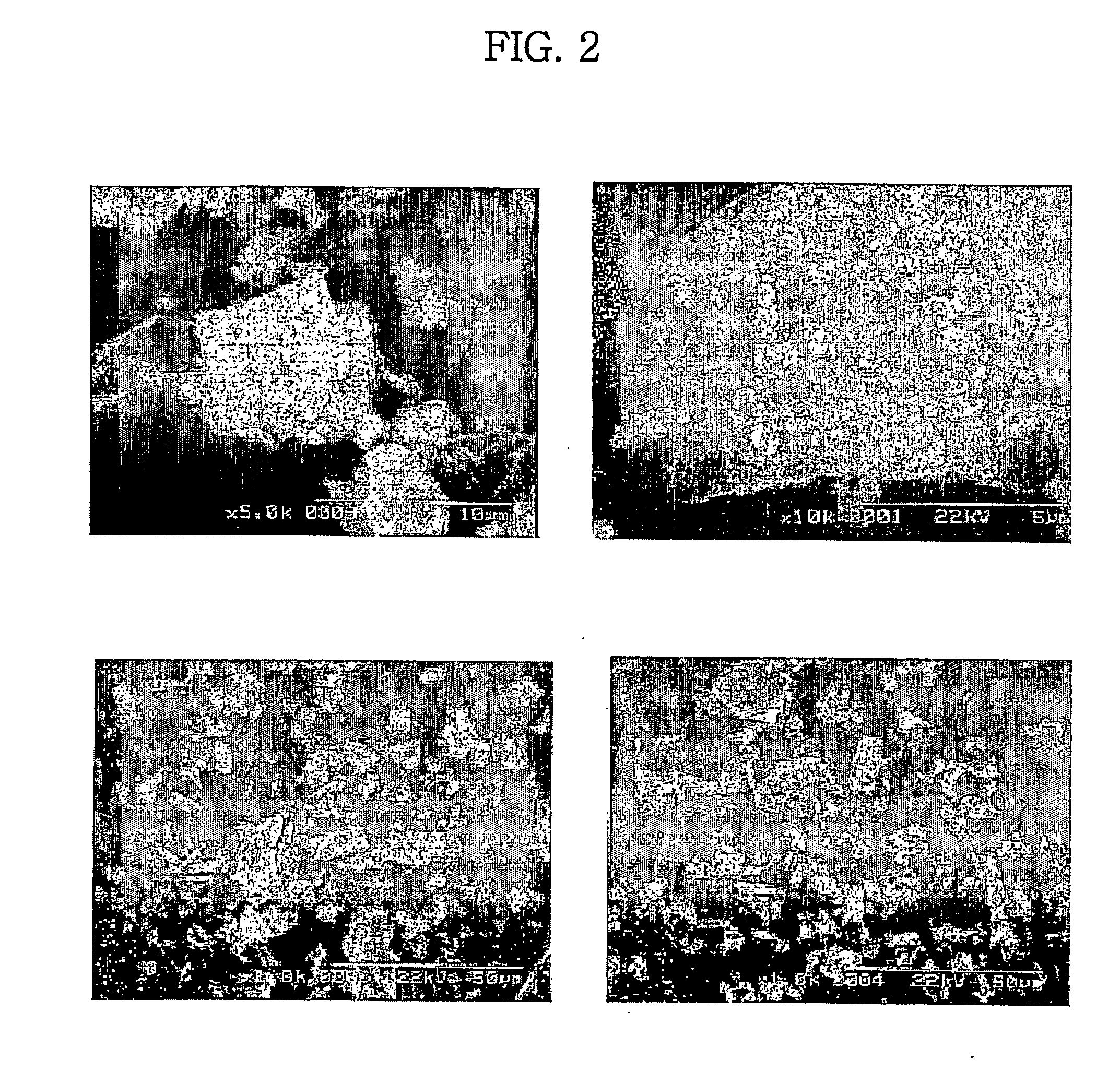Process for producing a powder consisting of sodiumsesquicarbonate and layered silicate
a technology of sodium sequicarbonate and layered silicate, which is applied in the direction of detergent powder/flakes/sheets, detergent compositions, chemistry apparatus and processes, etc., can solve the problems of high production cost, low yield, and undesirable crystalline structure of sodium sequicarbonate powder produced according to the process
- Summary
- Abstract
- Description
- Claims
- Application Information
AI Technical Summary
Benefits of technology
Problems solved by technology
Method used
Image
Examples
example 1
[0051] 27.3 g of sodium bicarbonate was mixed with 15 ml of water to produce a homogeneous solution, 72.7 g of first liquid sodium silicate (SiO2:Na2O=2.11:1) was mixed with 75 ml of water, and the resulting solutions reacted with each other in a reactor at 125° C. for 1.5 hours to produce slurry containing 50-70% of water. The slury was dried at 60-65° C. for 48 hours to produce white powder.
example 2
[0052] 34.5 g of sodium bicarbonate was mixed with 200 ml of water to produce a homogeneous solution, 65.5 g of first liquid sodium silicate (SiO2:Na2O=2.11:1) was mixed with 75 ml of water, and the resulting solutions reacted with each other in a reactor at 125° C. for 1.5 hours to produce slurry containing 50-70% of water. The slurry was dried to produce powder at 60-65° C. for 48 hours.
example 3
[0053] 37.6 g of sodium bicarbonate was mixed with 30 ml of water to produce a homogeneous solution, 62.4 g of first liquid sodium silicate (SiO2:Na2O=2.11:1) was mixed with 75 ml of water, and the resulting solutions reacted with each other in a reactor at 125° C. for 1.5 hours to produce slurry containing 50-70% of water. The slurry was dried to produce powder at 60-65° C. for 48 hours.
PUM
 Login to View More
Login to View More Abstract
Description
Claims
Application Information
 Login to View More
Login to View More - R&D
- Intellectual Property
- Life Sciences
- Materials
- Tech Scout
- Unparalleled Data Quality
- Higher Quality Content
- 60% Fewer Hallucinations
Browse by: Latest US Patents, China's latest patents, Technical Efficacy Thesaurus, Application Domain, Technology Topic, Popular Technical Reports.
© 2025 PatSnap. All rights reserved.Legal|Privacy policy|Modern Slavery Act Transparency Statement|Sitemap|About US| Contact US: help@patsnap.com



